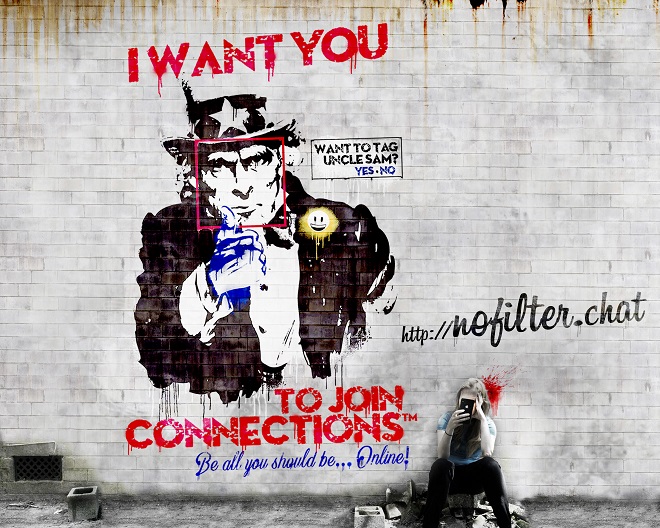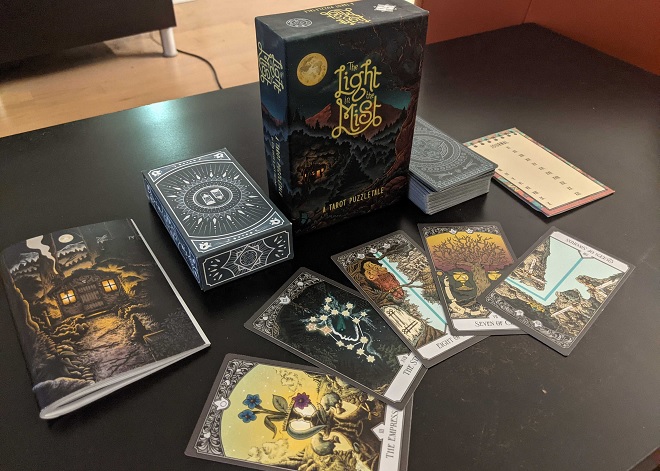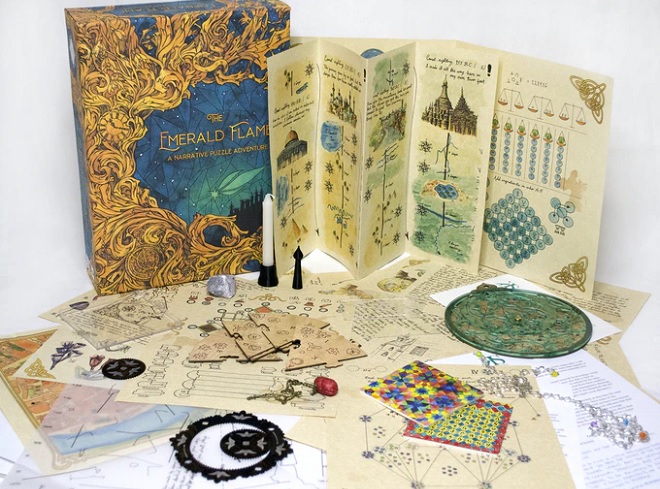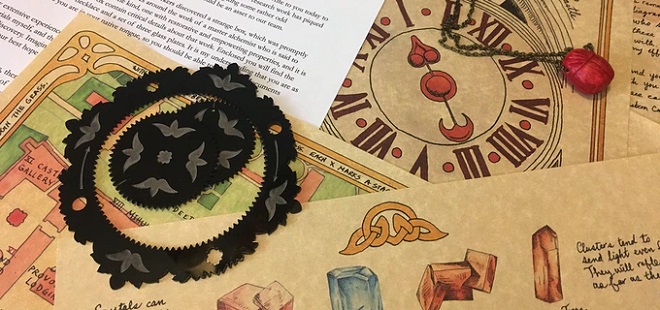
Social media can be an absolute trashfire. But don’t worry, starting on October 2nd, it’s about to get a whole lot worse – that’s when pseudonym productions is launching out #NOFILTER, a “horrifyingly satirical, totally narcissistic thriller starring YOU.” For as little as $14, players can sign up to participate in a six-week long experience that invites players to enter an alternate world where the United States government created Connectionsâ„¢ as a mandatory social media platform designed to solve all our problems.
Sarah Elgar, pseudonym productions’ president and creative director, explains that the game is designed “to satirize the sad state of social networks…in the most absurdly over the top ways possible”, and the skewering of social media starts before the game even begins, with the registration process. For $14, players can sign up for the “Follower” level, which provides access to the main game experience that takes place on the Connectionsâ„¢ platform, with the ability to score coveted invitations to the games’ weekly live “physical happenings”, centered around at least four major cities in California, Florida, and New York. Paying a premium for “Verified” or “influencer” status opens up more personalized character interactions, as well as in-game recognition for their elevated status as a reminder that some people are just better than others.

Once players are registered, they become drafted onto the Connectionsâ„¢ platform, where they are encouraged to perform compulsory life-affirming tasks like completing daily wellness routines and selfie duties. In parallel, players are encouraged to explore the stories of prominent users like the platform’s creator Nolan Stauf, yoga instructor Taylor Hill, and internet provocateur Vokorev with a story that might just verge into the supernatural.
While the game hasn’t launched yet, the #NOFILTER website provides a number of hints at the experience to come, sharing a sample chat log with Nikki as she goes about her daily selfie and NeoGa (Neo Yoga) quota in for the day that devolves into something else entirely. The FAQ is also peppered with more than a few bon mots, and the responses alone provide the best sales pitch for the experience available. Reminding prospective players that status is everything, the FAQ notes that “those who want to be all-in for 6 weeks and absolutely be part of everything they can and have us basically worship them should select the Influencer level, naturally. because Influencers are the most important people in the world. obviously.” The how to play section comes with its own ominous warning, noting that “#NOFILTER‘s story is a satire of social media, so it will help to be familiar with various social networks like facebook, instagram, and twitter – and the horrible trolling, doxxing, bullying, and narcissistic behavior that goes on there. but if that’s not your jam, you’ll still enjoy this experience. in fact, more power to you.” But as much as the game will explore peoples’ horrible behaviors online, it has a clearly stated zero-tolerance policy towards players directing that behavior towards each other – players caught harrassing, bullying, or violating the privacy of other players will receive instant bans, with no refund.
Validate my self worth by sharing this article. Then go back and like, share, retweet, hashtag, pin, upvote, toot, snap, and Insta-fave it whenever you see it online to fill the void in my life. Or better yet, sign up for #NOFILTER to find out how much worse things can get. But remember, the game starts in earnest on October 2nd, so act quick or you’ll risk a serious case of #FOMO.






 This Halloween, the MIT Media Lab is launching
This Halloween, the MIT Media Lab is launching 
